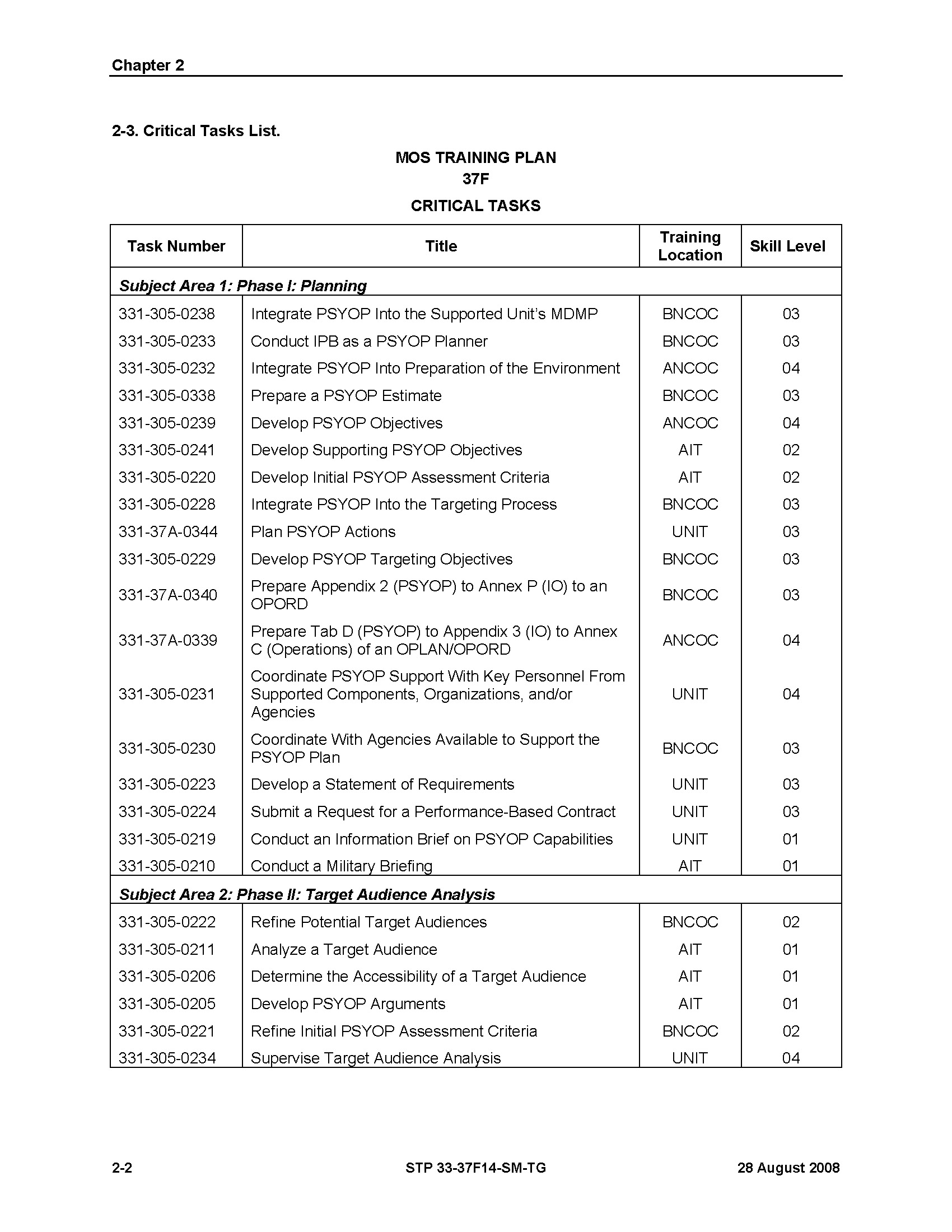
In this manner, the OPAT signals a brand new way of thinking about recruiting. Wants you to know, fix that before you sign up. If you’re having trouble completing five pushups, The Army That is, The Army will turn you from a blob into a brute. These new signals to recruits about pre-conditioning represent a sea-change reversal of course to how Army basic training is often perceived in popular culture. – Michael McGurk, director of research and analysis at the Army Center for Initial Military Training. Before you go to training, you’re going to have to get in shape. “It’s not I’m going to join the Army and get in shape it’s I need to get in shape so I can join the Army, That’s the mindset we’re trying to instill in young people. The mere presence of the OPAT in the onboarding process signals to recruits the need to be in shape prior to joining The Army, not to get fit by joining The Army. The OPAT assesses the best way to move trainees from fitness point A to fitness point B, in line with their innate abilities and in consideration of future service positions within The Army. None can graduate Basic Training without passing the Army Physical Fitness Test (soon to be the Army Combat Fitness Test). This definitely includes their physical potential.Īll Soldiers are presumed to be fit post-training. With an OPAT score, combined with mental and psychological profile tests, the Army can more smartly position recruits into “occupational tracks” that align with their baseline skills. The OPAT is an Army entry physical test that measures the speed, strength, and conditioning of the incoming recruit. OPAT: Occupational Physical Assessment Test The Occupational Physical Assessment Test (OPAT) is geared to realign that thinking. The existing fitness models completely excluded the physical condition and composition of the incoming recruit. The Army determined a major cause of the injury and dropout problem to be the assumption that the Army can and will mold any recruit into the physical shape required to be a Soldier. In broader numbers, lowering attrition rates by even 1,000 recruits a year saves The Army $50,000,000.

Roughly speaking, the Army loses $50,000 for every trainee unable to reach active duty service. That number rises even higher depending on the type of secondary training. The Army estimates the cost at roughly $50,000 to put a recruit through Basic and Advanced training.

With a rising number of injuries to recruits during training and an associated untenable level of attrition, the Army understood they were failing in this internal mission. Army attempts to put recruits into a position to be successful in their military service.


 0 kommentar(er)
0 kommentar(er)
